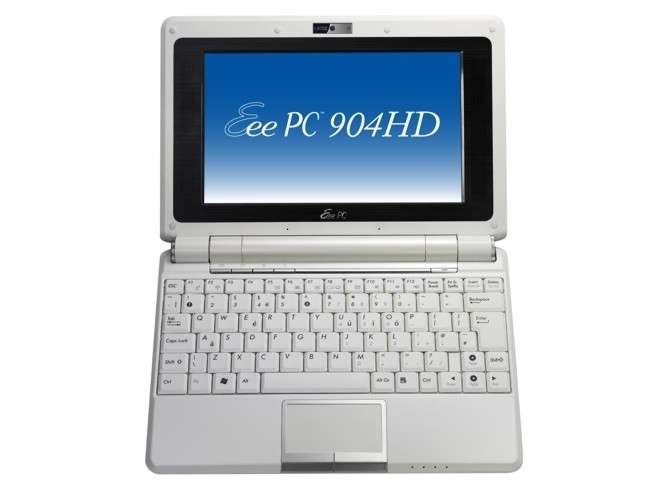
The massive growth in netbook sales is one of the success stories of the last year. For something that grew from the design concept for a low-cost computer system for underdeveloped countries, it seems to have grasped the imagination of the credit-crunched western world, too.
The figures are a little difficult to track (as they're still exploding), but the third quarter of 2008 saw 5.6 million units shipped worldwide. That's heading towards being a full sixth of total worldwide laptop sales. And these sorts of figures mean that everyone in the industry now wants a slice of that ever so delicious netbook pie. This will mean innovation, so exactly what treats can you expect from new netbooks in 2009 and beyond?
Something we definitely know is that netbooks will have to remain cheap. So it's unfortunate that a host of manufacturers are missing this crucial point. Asus kicked off this whole market and has 30 per cent of the share. But it has lost overall control to Acer who has 36 per cent of the market. We wouldn't say the Aspire One is much better than the Eee PC, but it's cheaper.
Laptop-priced netbooks
This loss of focus is seeing a steadily increasing trickle of laptop-priced netbooks. MSI, which created the rather excellent Wind netbook, is a prime example with its latest U110 and U115 models reportedly slated for eye watering $550+ and $680+ price points. These are based around the alternative Intel Atom Z530 processor, no more powerful than the widespread Atom N270, it does consume a little less power but also costs 50 per cent more, which doesn't seem a worthwhile deal to us.
More interestingly the U115 offers an integrated SIM for mobile broadband, nothing new as it already exists on the Dell Mini 9 and Advent 4213, but this is something you should expect to see more widely. Not so much from consumer demand but because it makes these netbooks easier for mobile phone companies to offer them as freebies with suitable contracts.
While the Z5x0 is the ghost of Christmas present, we'd hope to see at least a couple of netbooks based around the dual-core Atom N330. The same price as the Atom N270, its Achilles' Heel is power. Instead of the N270's 2.5W draw it has a comparatively elephant-sized carbon footprint of 8W. While that's still perfectly acceptable for a netbook it would rather dent any battery-life advantage the Intel machines hold over rival technologies, but can offset that by being able to decode 1080P video.
Get daily insight, inspiration and deals in your inbox
Sign up for breaking news, reviews, opinion, top tech deals, and more.
Nvidia is also planning to bring 3D gaming to the netbook market with its new mobile graphics processor, the 9400M (the same one that's in the new MacBooks). As well as gaming, we'll also have proper 1080p support as well as other protocols such as DirectX 10 and Nvidia's CUDA.
What new tech can we expect?
All of that activity is early on in 2009, but towards the second half of 2009 Intel takes the first step towards the ultimate destination for netbooks. That's a system on a single chip with its 'Pineview' Atom. This integrates both the graphics and memory controller onto the same chip, radically reducing system power.
In existing Atom netbooks the 945GSE chipset consumes 9.3W and around two thirds of this is from the graphics and memory controller alone. Chipsets are built on far older manufacturing processes than processors, so integrating the most power hungry sections of the chipset into the processor will have a dramatic effect.
The entire platform should draw about 18W of power, which is in the same ballpark as the current Intel Atom platform (12 watts). Note that Ion will cut the number of chips in the Atom platform down from Intel's three-chip design (Atom + 945GSE + I/O hub) to just two chips (Atom + 9400M), but the 9400M is substantially more powerful a GPU and you can't get something for nothing.
Although the Atom does makes the perfect low-cost netbook processor, it's not all Intel. VIA and AMD both have products that can be put inside a netbook, Raon Digital has what it calls the world's first dual-core netbook based on an AMD Turion, while the HP Mini-Note 2133 is 'powered' by the VIA C7-M processor.
VIA and AMD's plans
The VIA is more suited than the Turion, and although the C7-M is years old, it's dirt cheap. While its in-order core with weak floating point pipeline lacks power, it still runs x86 code perfectly well and is used widely in embedded systems. Its successor, the VIA Nano, looks to run more than twice as fast as the old C7-M and at the same clockspeed.
It even looks to out power the Atom N270 clock for clock, but taking total power consumption into account we'd imagine manufacturers opting for a lower-speed, lower-power ultra-low voltage option that better matches Atom-based netbooks.
AMD has offered basic details of its 'Yukon' netbook platform also due later in 2009. It will combine a new 'Huron' single-core processor and its existing and ageing RS690 chipset to supply a sub-25W package, which while fine for a typical laptop platform, isn't great for a netbook one.
The Huron processor will have to be a single-core, underclocked Turion, to meet that kind of power rating and is more akin to what you'd expect from an entry-level laptop than a netbook. But if the price is right and even if it ends up in larger 12- or 13-inch laptops, AMD could carve its own netbook segment.
-------------------------------------------------------------------------------------------------------